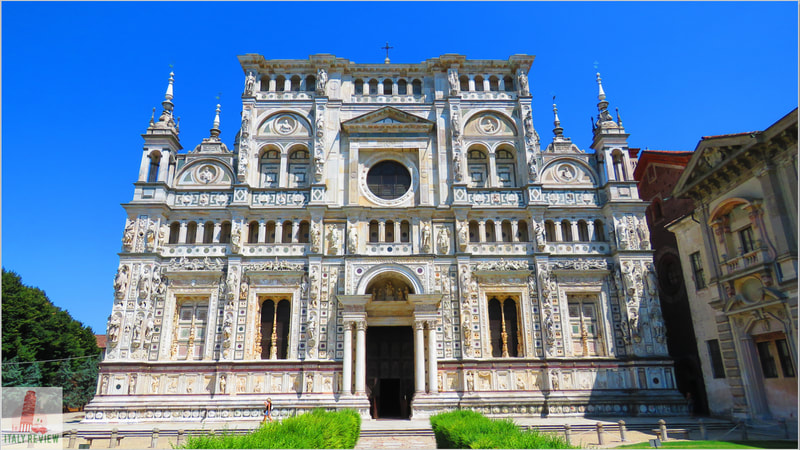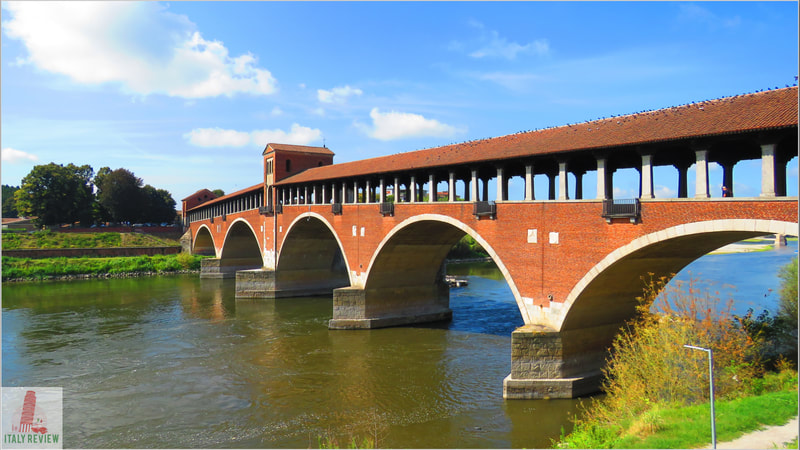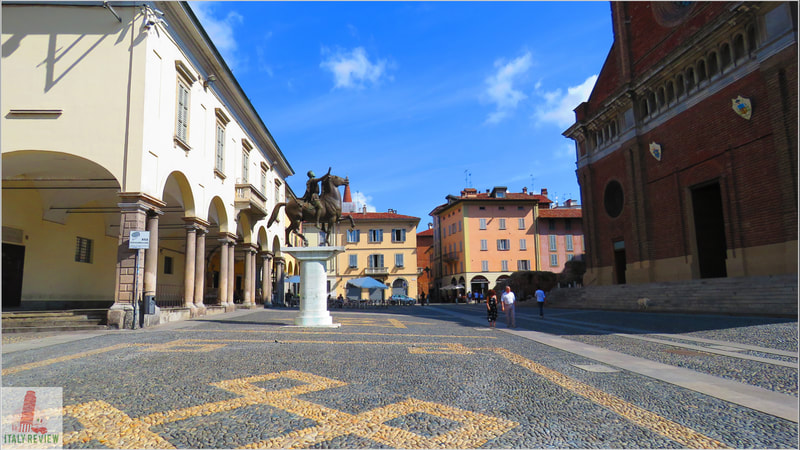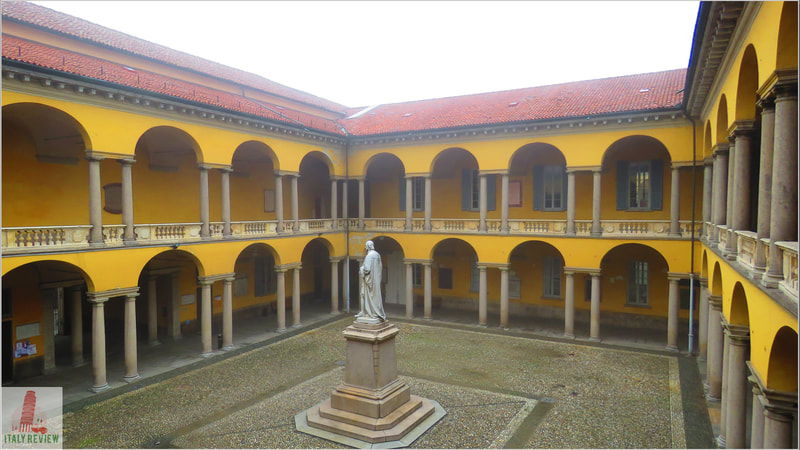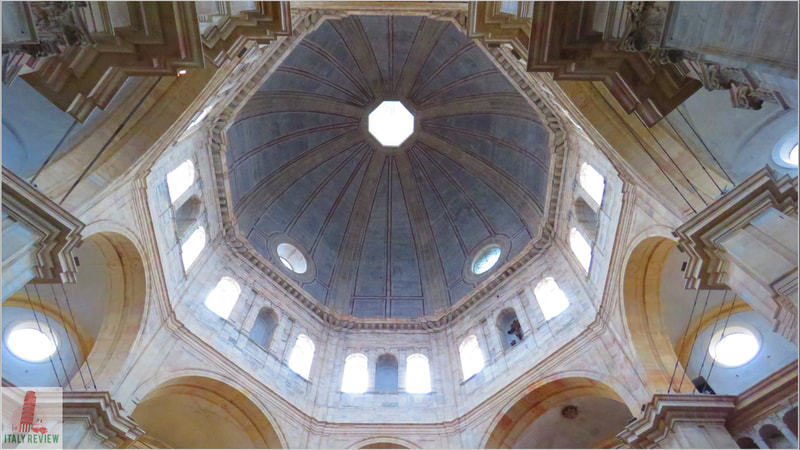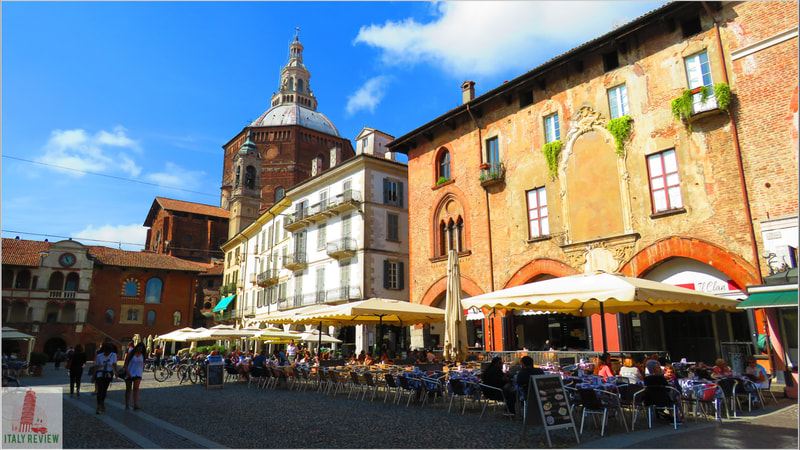Pavia
|
By Dion Protani
|
Latest update: 30 December 2023
|
|
The city of Pavia is the capital city of the Province of Pavia with a population of 72,612 inhabitants.
Standing at an elevation of 77 metres above sea level, it covers a total area of 62 km² and lies 40 kilometres south of Milan, the regional capital of Lombardy. An historic city that was founded even before the Romans came, it enjoyed its golden age in the early medieval period when it was capital of the Lombard Kingdom, from 572 to 774. |
Related links
Sightseeing Pavia: the City Centre
The city centre is full of sights from both the medieval period and the Renaissance but to this day retains a youthful zest, owing much to its University which is one of the most celebrated in Italy. The central square in the city is Piazza della Vittoria; lined with bars and restaurants, it's also home to Palazzo Broletto, the city's town hall. To the right of the Broletto, a passageway leads to the city's second major square: Piazza del Duomo. The centrepiece of the Piazza is Pavia Cathedral, built in the 15th century and known for its huge dome which is among the largest in Italy.
The cathedral is usually the most celebrated religious building in any city but in Pavia's case that accolade belongs to the Basilica di San Michele Maggiore. The historic basilica with its distinctive sandstone facade was completed in 1155 AD and was the site of the coronation of several Holy Roman Emperors including Frederick I Barbarossa on 24th April of that same year.
The city centre is full of sights from both the medieval period and the Renaissance but to this day retains a youthful zest, owing much to its University which is one of the most celebrated in Italy. The central square in the city is Piazza della Vittoria; lined with bars and restaurants, it's also home to Palazzo Broletto, the city's town hall. To the right of the Broletto, a passageway leads to the city's second major square: Piazza del Duomo. The centrepiece of the Piazza is Pavia Cathedral, built in the 15th century and known for its huge dome which is among the largest in Italy.
The cathedral is usually the most celebrated religious building in any city but in Pavia's case that accolade belongs to the Basilica di San Michele Maggiore. The historic basilica with its distinctive sandstone facade was completed in 1155 AD and was the site of the coronation of several Holy Roman Emperors including Frederick I Barbarossa on 24th April of that same year.
The Ponte Coperto and River Ticino
The southern edge of Pavia is marked by the River Ticino, across which stands the Ponte Coperto (literally "Covered Bridge") which to many is the most iconic sight of the city. The bridge was built in 1949 after the previous version (already a replacement itself for the Roman version), was hit an Allied bombing raid in 1945 and subsequently collapsed in 1947.
One unique aspect of the bridge it that it has a chapel half way across, particularly useful if celestial intervention is required to get you all the way to the other side (of the bridge...). On the southern bank of the river there's a small village called Borgo Ticino, characterised by its colourful fishermen's houses.
The southern edge of Pavia is marked by the River Ticino, across which stands the Ponte Coperto (literally "Covered Bridge") which to many is the most iconic sight of the city. The bridge was built in 1949 after the previous version (already a replacement itself for the Roman version), was hit an Allied bombing raid in 1945 and subsequently collapsed in 1947.
One unique aspect of the bridge it that it has a chapel half way across, particularly useful if celestial intervention is required to get you all the way to the other side (of the bridge...). On the southern bank of the river there's a small village called Borgo Ticino, characterised by its colourful fishermen's houses.
North of Piazza della Vittoria: Pavia's University and Medieval Towers
Heading north of Piazza della Vittoria there are further interesting sights to visit. The first of those is the Università degli Studi, one of the world's oldest universities, dating back to 1361. Behind the University is an equally fascinating sight; during medieval times, powerful families used to build towers to denote their wealth and status.
At one time there were hundreds of these towers in Pavia but nowadays just three remain and they can be seen side by side on Piazza Leonardo da Vinci. On the subject of towers, another example was the Torre Civica which used to stand on Piazza del Duomo but suddenly collapsed in 1989; a tragic event which took the lives of four people.
Heading north of Piazza della Vittoria there are further interesting sights to visit. The first of those is the Università degli Studi, one of the world's oldest universities, dating back to 1361. Behind the University is an equally fascinating sight; during medieval times, powerful families used to build towers to denote their wealth and status.
At one time there were hundreds of these towers in Pavia but nowadays just three remain and they can be seen side by side on Piazza Leonardo da Vinci. On the subject of towers, another example was the Torre Civica which used to stand on Piazza del Duomo but suddenly collapsed in 1989; a tragic event which took the lives of four people.
Castello Visconteo
Whereas the southern perimeter of the city is marked by the River Ticino, the northern end is dominated by a castle: Castello Visconteo, built in the 14th century by the famous Milanese families: the Visconti and the Sforza.
For many years the fortress was used as an army barracks but is currently home to a series of museums: the Musei Civici displaying paintings, glassware, sculptures and archaeological artefacts.
Whereas the southern perimeter of the city is marked by the River Ticino, the northern end is dominated by a castle: Castello Visconteo, built in the 14th century by the famous Milanese families: the Visconti and the Sforza.
For many years the fortress was used as an army barracks but is currently home to a series of museums: the Musei Civici displaying paintings, glassware, sculptures and archaeological artefacts.
The Certosa di Pavia
This far down the description I haven't even mentioned Pavia's most famous sight. The reason being, the Certosa di Pavia (Pavia Charterhouse) is located 10 kilometres north of the city centre. Another monument started by the Visconti family (1396), it was eventually finished 100 years later by the Sforza who had assumed control of the city in the intervening years.
The Certosa di Pavia has its own train station which is a 17 minute walk (1.4 km) from the Certosa itself. The S13 route trains run north to Milan (51 minutes) or south to Pavia in 8 minutes.
This far down the description I haven't even mentioned Pavia's most famous sight. The reason being, the Certosa di Pavia (Pavia Charterhouse) is located 10 kilometres north of the city centre. Another monument started by the Visconti family (1396), it was eventually finished 100 years later by the Sforza who had assumed control of the city in the intervening years.
The Certosa di Pavia has its own train station which is a 17 minute walk (1.4 km) from the Certosa itself. The S13 route trains run north to Milan (51 minutes) or south to Pavia in 8 minutes.
Comune di Pavia
|
Province: Pavia
Region: Lombardy Population: 70,380 (source: ISTAT 1 January 2023) Size: 62 km² Elevation: 77 metres Top sights: Ponte Coperto, Certosa di Pavia, Piazza della Vittoria Recommended accommodation: Hotel Moderno Close by: Vigevano, Lodi, Crema, Milan, Pizzighettone, Bergamo |
Pavia Travel
Pavia's main train station is situated at the western edge of the city centre, an 11 minute walk (900 metres) from Piazza della Vittoria. To reach most of Lombardy's main destinations by train from Pavia you first need to travel to Milan and change trains there.
The RE 13 trains take 32 minutes to reach Milano Centrale or the S13 (the same one that stops at the Certosa di Pavia) takes 46 minutes to reach Porta Garibaldi.
The most convenient airport for Pavia is Milan Linate Airport which is a 37 minute drive away, a distance of 51 kilometres. Alternatively, Milan Malpensa Airport is just a little further away, 58 minutes by car (85 km).
The RE 13 trains take 32 minutes to reach Milano Centrale or the S13 (the same one that stops at the Certosa di Pavia) takes 46 minutes to reach Porta Garibaldi.
The most convenient airport for Pavia is Milan Linate Airport which is a 37 minute drive away, a distance of 51 kilometres. Alternatively, Milan Malpensa Airport is just a little further away, 58 minutes by car (85 km).
|
Public transport: Central train station, local buses
By car: Lodi - 42 mins (35 km), Milan - 47 mins (42 km) |
Fly to: Milan Linate Airport - 44 minutes by car (43 km)
By train: Certosa di Pavia - 8 mins, Milano Centrale - 32 mins |

